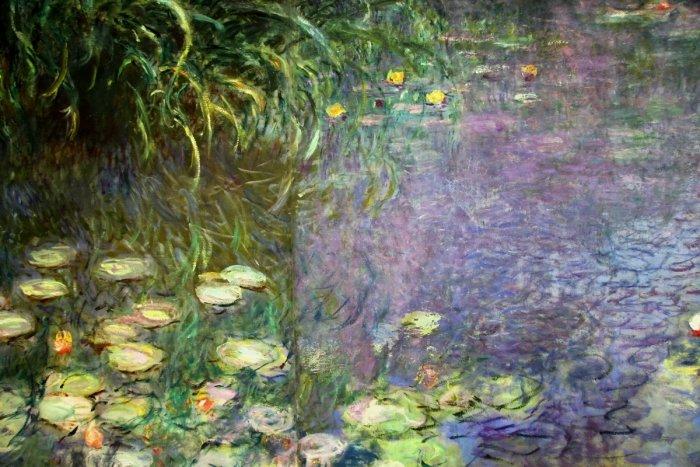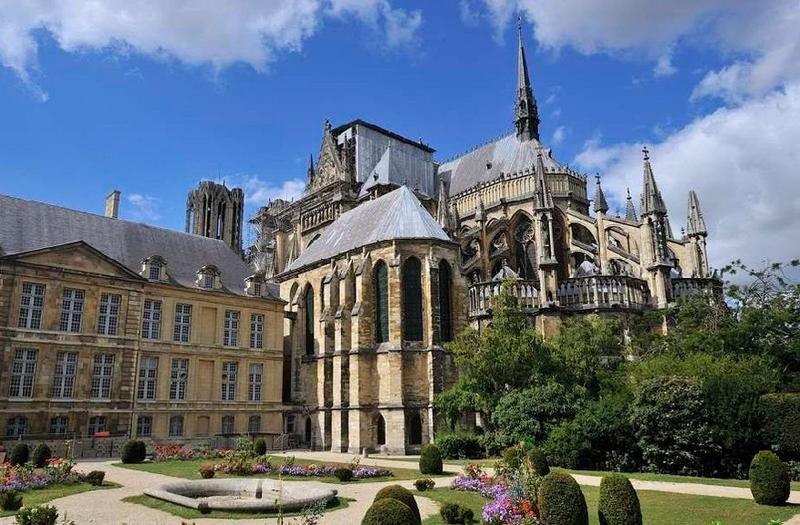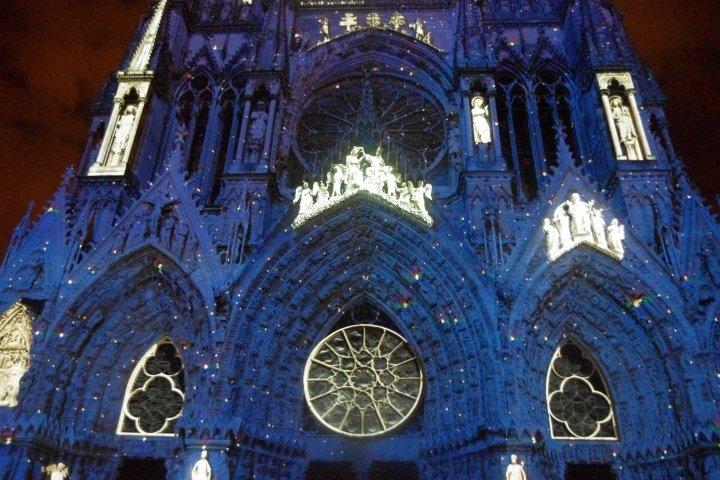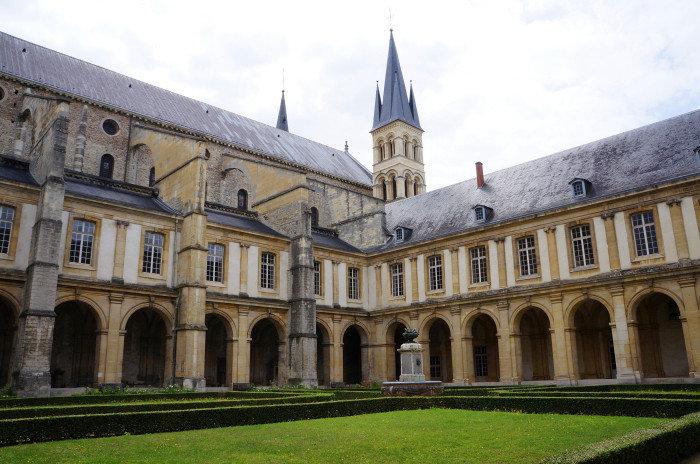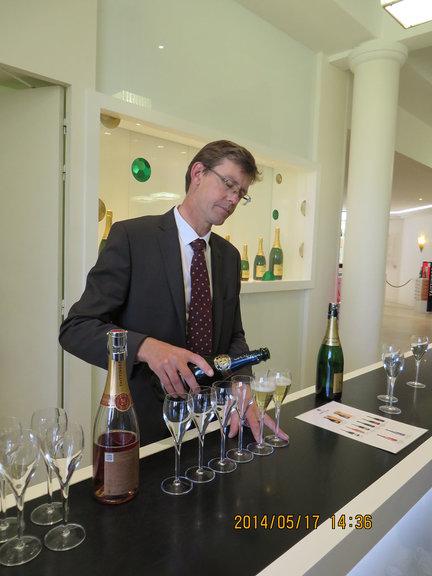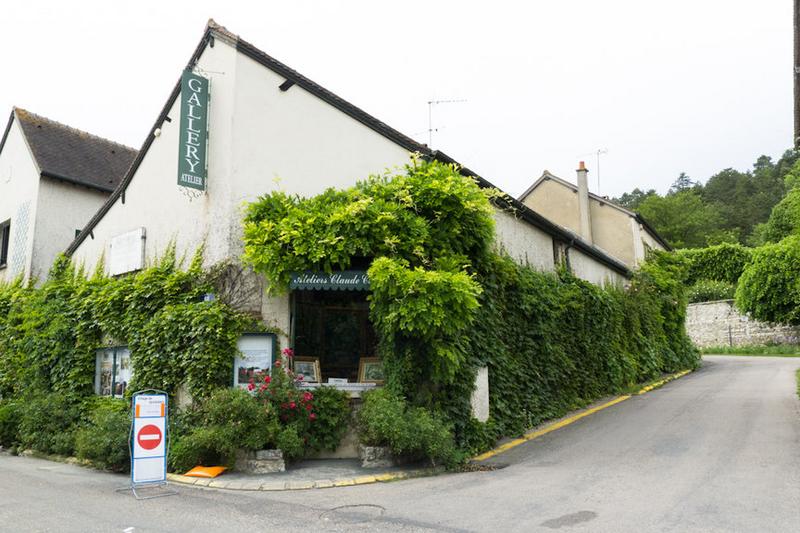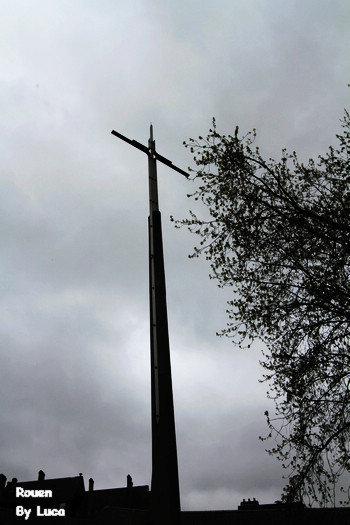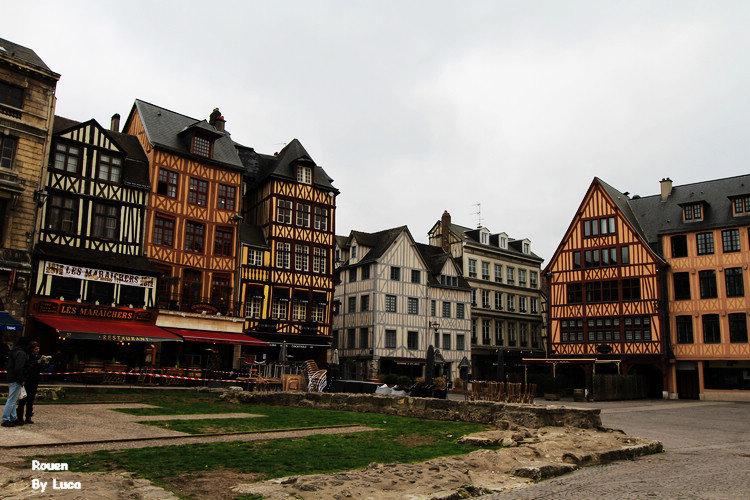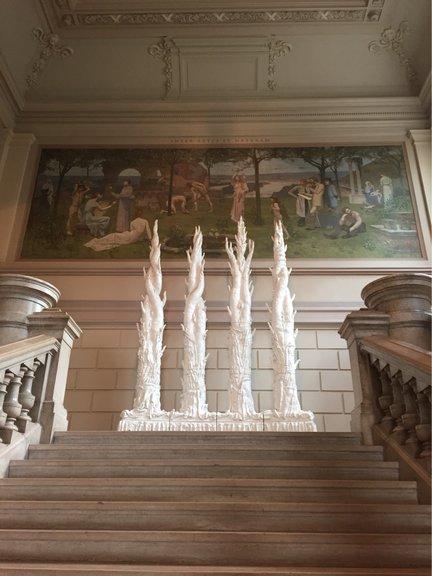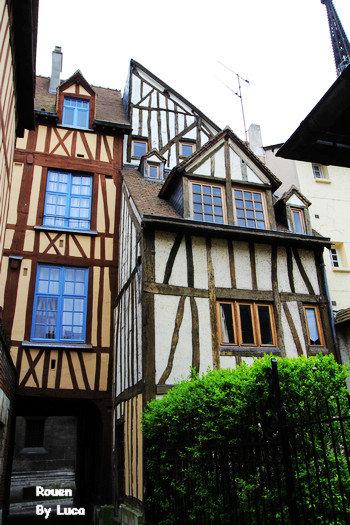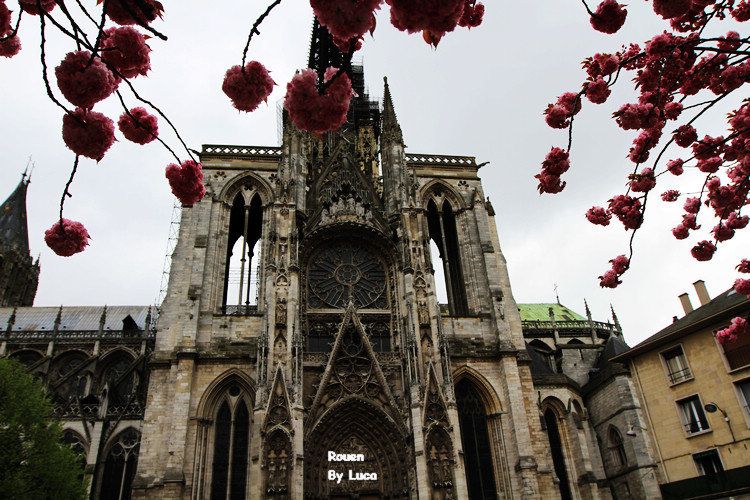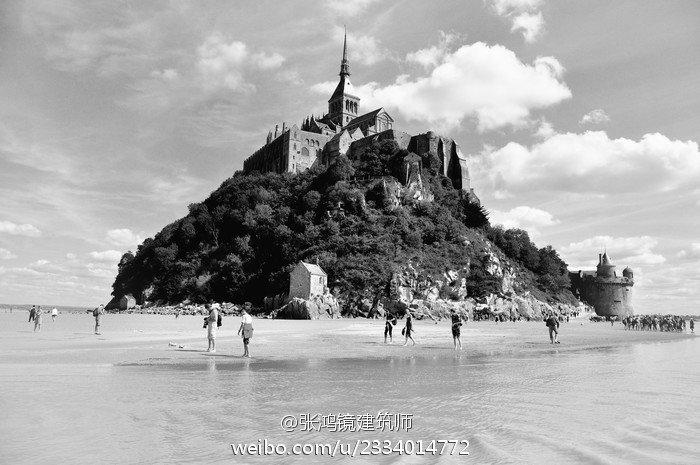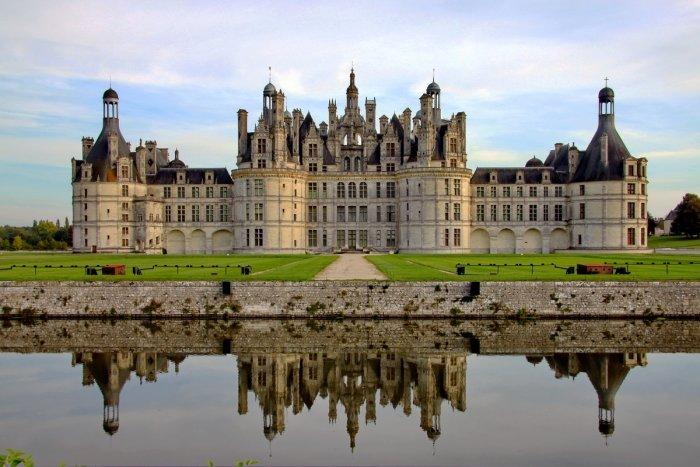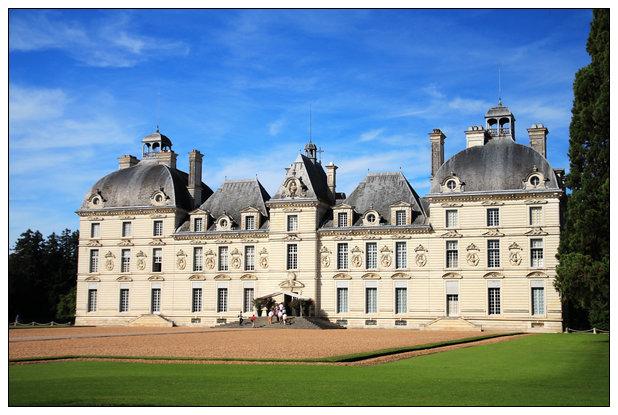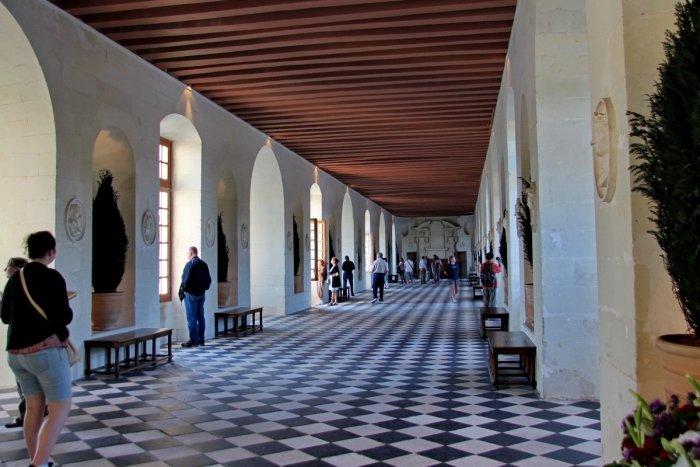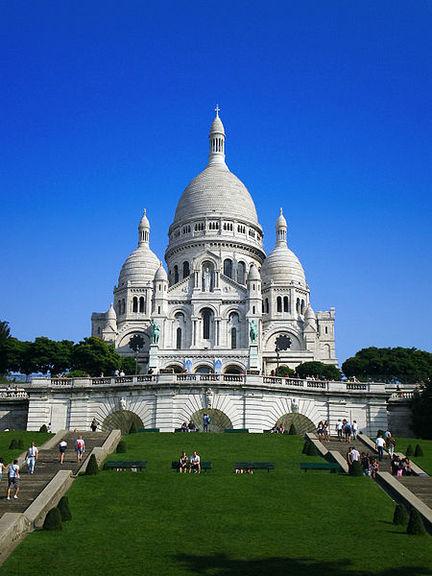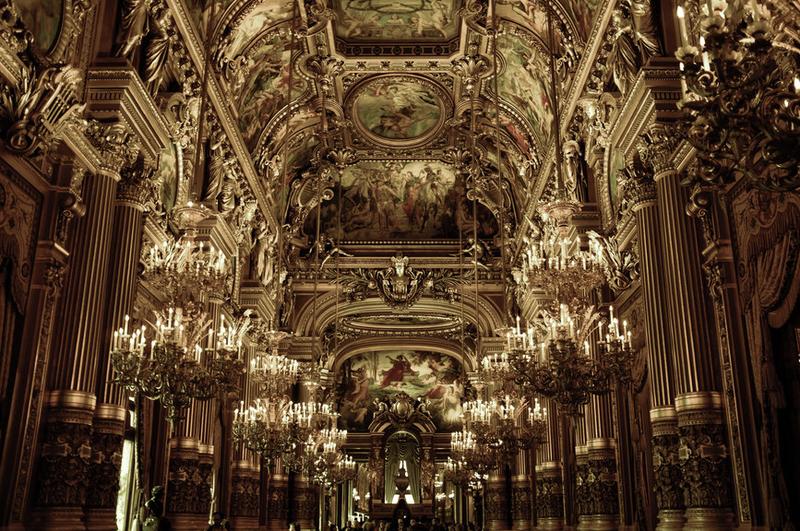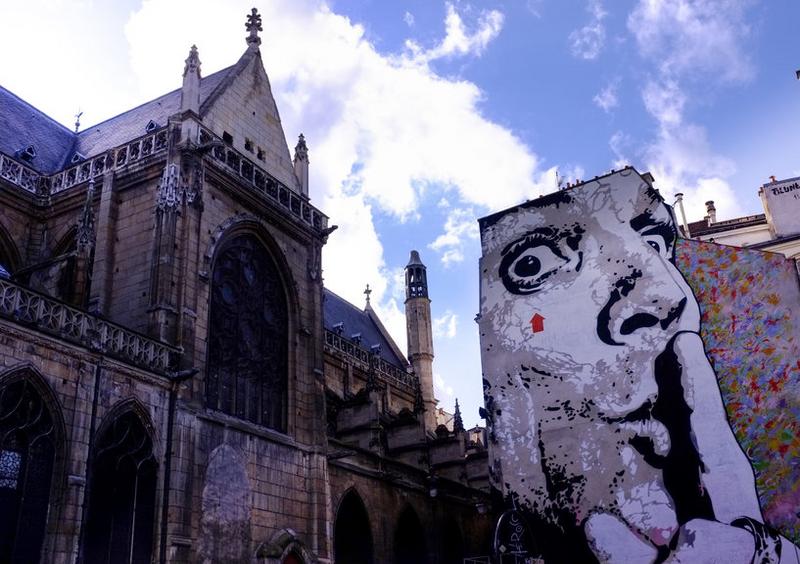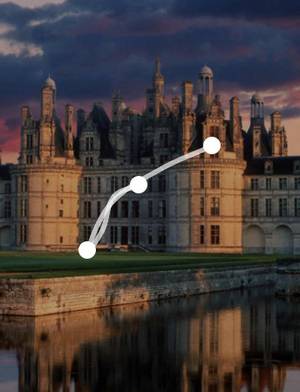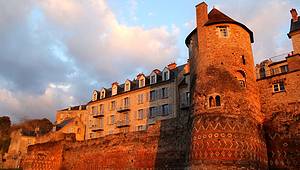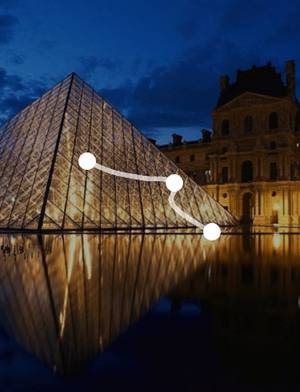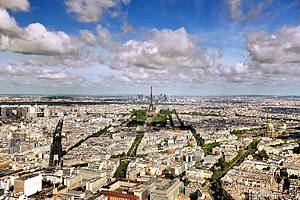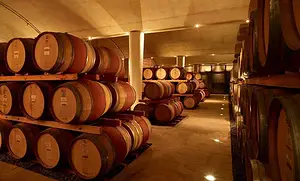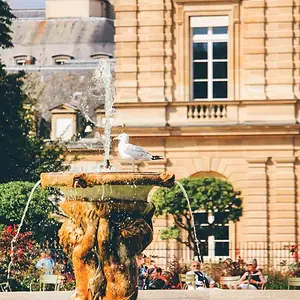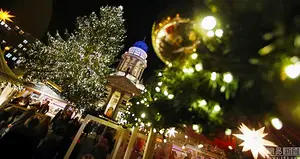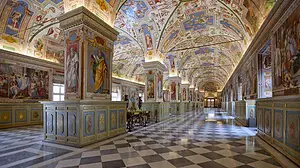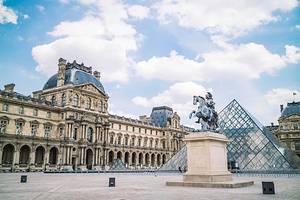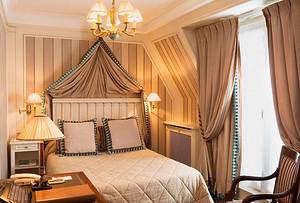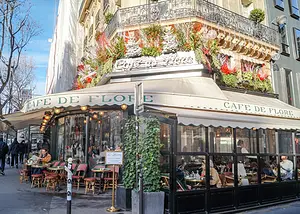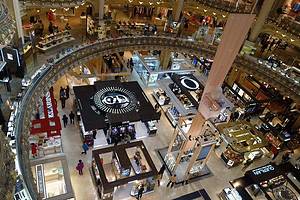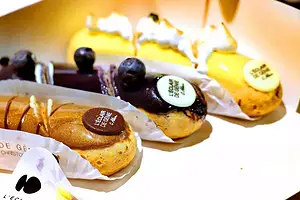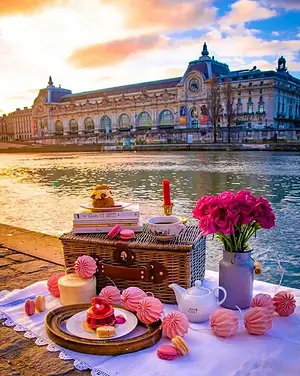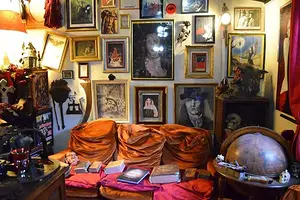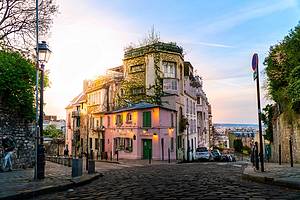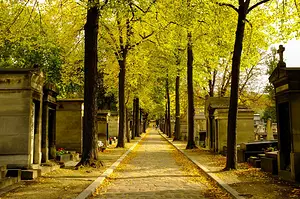7-day self-driving tour in northern France
6 cities |
29 attraction(s) |
total distance 167
km
 TIPS
TIPS
Day1
Day2
Day3
Day4
Day5
Day6
Day7
Day1: Paris
5 attraction(s) ·
8 km
1
The Louvre Museum, the former residence of the French kings, is one of the largest museums in the world. It is divided into eight departments: Oriental Antiquities, Egyptian Antiquities, Greek and Roman Antiquities, Paintings, Sculptures, Art Objects, Islamic Art, and Medieval to 1848. The Louvre was originally a fortress in the late 12th century and was later converted into a royal palace by King Francis I. It has a rich collection of art treasures, including famous Italian paintings. After the French Revolution, it was opened as a museum and has been expanded multiple times, especially during the reigns of Napoleon and Napoleon III. The Louvre is famous for its glass pyramid, designed by Chinese architect I.M. Pei in the 1980s. It houses a vast collection of artworks from different cultures and periods before 1848, including ancient Egyptian, Near Eastern, and Middle Eastern civilizations, ancient Greek and Roman civilizations, Islamic art, and works from the Middle Ages to the mid-19th century. With over 400,000 items in its collection, only about 40,000 are on display. It is recommended to plan your visit based on your preferences, with highlights including the Italian and French painting galleries, the Ancient Egypt section, the Greek and Roman art section, and the Napoleonic apartments.
3
km
2
Tuileries Garden is located between the Louvre Museum and the Champs-Élysées, which is the heart of Paris and has a unique location. It used to be a tile factory, hence the name.
Initially, Tuileries Garden was an Italian-style garden, but later it was transformed by designer Lenôtre into a typical French garden.
The Tuileries Palace in the garden was always the royal sleeping palace, but it was destroyed during the French Revolution in 1880.
In 2005, Tuileries Garden became part of the Louvre Museum with the connection of its left and right sides, and it became an open courtyard. It is parallel to the Rue de Rivoli, with a large pond and outdoor cafes in front of it. The Musée du Jeu de Paume (museum of the game of palm) is located in the northwest corner of the royal garden, which was added by Napoleon III in 1861 for indoor tennis playing but now serves a different purpose. It is also in harmony with the Musée de l'Orangerie in another corner of the garden.
2
km
3
Place de la Concorde is a large square in the heart of Paris, France, with an area of approximately 84,000 square meters. In the center of the square stands a massive Egyptian obelisk adorned with hieroglyphs praising the rule of Pharaoh Ramses II. The obelisk was originally erected at the entrance of the Luxor Temple and was gifted to France by Muhammad Ali, the Ottoman governor of Egypt, in 1829. It arrived in Paris on December 21, 1833, and was erected in the center of Place de la Concorde by King Louis-Philippe on October 25, 1836. The original apex was missing, so in 1998, the French government added a golden pyramid-shaped apex to the obelisk.
1
km
4
Pont Alexandre III was built in 1897 and is an arch bridge spanning the Seine River in Paris, France. It connects the Champs-Élysées district on the right bank with the Invalides and Eiffel Tower area on the left bank. The bridge is named after Tsar Alexander III of Russia and was built to commemorate the Franco-Russian Alliance formed in the late 19th century. It is adorned with numerous exquisite sculptures and is illuminated by yellow lights at night. Pont Alexandre III has appeared in various Paris postcards, films, and music videos, such as Adele's "Someone Like You."
3
km
5
The Seine River is the second largest river in France, flowing through the center of Paris. It is 780 kilometers long and has a drainage area of 78,000 square kilometers. The river is constrained by artificial stone embankments in the central section of Paris, which were inscribed on the UNESCO World Heritage List in 1991. The French refer to the north bank of the Seine as the "right bank" and the south bank as the "left bank".
The Seine River in Paris is known for its numerous bridges, with the most magnificent being the Alexander III Bridge, which was a gift from Tsar Nicholas II of Russia and named after his father. Many important cultural and historical landmarks in France are located along the banks of the Seine, such as the Louvre Museum, Les Invalides, the Pantheon, the Orsay Museum, the Palace of Versailles, the Eiffel Tower, and the Arc de Triomphe. The Seine River has also nurtured many world-renowned cultural figures and is considered the mother river of Paris, a city known for its rich cultural heritage.
Day2: Paris
5 attraction(s) ·
10 km
1
The beautiful building with a large clock across the Seine River from the Tuileries Garden in front of the Louvre is the former southwest train station of Paris, which was transformed into a museum with the largest collection of Impressionist art in the world in 1986. The Musée d'Orsay, one of the three major museums in Paris, mainly collects art treasures from 1848 to 1912 (for items before 1848, it is recommended to visit the Louvre, and for art after 1912, it is recommended to visit the Pompidou Center). Some must-see masterpieces here are Vincent van Gogh's "Self-Portrait" and "The Church at Auvers", Claude Monet's "Impression, Sunrise" and "Woman with a Parasol", Jean-François Millet's "The Gleaners", Edouard Manet's "Luncheon on the Grass", Paul Cézanne's "Still Life", and numerous fine works by Pierre-Auguste Renoir, Paul Gauguin, and Pablo Picasso.
2
km
2
Musée de l'Orangerie is a small but extraordinary museum located by the Seine River, right next to Place de la Concorde. Originally a part of the former Tuileries Palace, it now houses a portion of the palace converted into a museum. The main attraction is the masterpiece series "Water Lilies" by Claude Monet, along with other works by renowned artists such as Picasso, Cézanne, Renoir, Matisse, etc. The museum was originally built in 1852 as a greenhouse for orange trees and later transformed into an exhibition space. It was specifically turned into a permanent home for Monet's "Water Lilies" at his request. The Musée de l'Orangerie underwent renovations in the 1960s and continues to host temporary exhibitions alongside the iconic "Water Lilies" series.
3
km
3
The Champs-Élysées is a famous avenue in Paris, located in the 8th arrondissement. It is considered to be the most beautiful street in Paris. The avenue stretches from the Arc de Triomphe in the west to the Place de la Concorde in the east. It is part of the city's central axis, along with the Arc de Triomphe du Carrousel. The avenue is often crowded and features luxury brands such as Cartier and Mont Blanc. During holidays, it is decorated with special lights and hosts events like the Bastille Day parade and the final stage of the Tour de France.
2
km
4
The full name of the Arc de Triomphe, located in the center of Place Charles-de-Gaule in Paris, is "Arc de Triomphe de l'Étoile". It was built in 1806 to celebrate a major victory in the "Battle of Austerlitz". Despite Napoleon laying the first stone, he did not live to see its completion. The French people held a funeral for him under the Arc de Triomphe 20 years after his death.
Beneath the Arc de Triomphe, there is an unknown soldier's tomb and an eternal flame in memory of the 1.5 million French soldiers who sacrificed themselves in World War I. On major holidays, a large French flag is hung on top of the Arc de Triomphe, and commemorative activities take place, such as on the anniversary of World War II on May 8th and on Armistice Day on November 11th.
The Bastille Day military parade, held every year on July 14th, starts from the Arc de Triomphe and continues to Place de la Concorde. If you want a good spot, you need to arrive early. During New Year's, the Arc de Triomphe is also a central gathering point, with a large crowd, although there are no fireworks in Paris on New Year's Eve.
The Arc de Triomphe is surrounded by twelve major avenues, with the famous Champs-Élysées, which connects to Place de la Concorde and faces the Louvre Museum, being one of them. This nearly 2-kilometer long avenue is considered one of the most beautiful streets in the world.
3
km
5
The Eiffel Tower, built in 1889, was originally constructed to welcome the World Exposition and commemorate the 100th anniversary of the French Revolution. Standing at a total height of 324 meters, it symbolized the industrial revolution that swept the world at that time. However, after its completion, it faced skepticism from many French people. Its massive steel structure seemed out of place in the entire city of Paris, and some even proposed demolishing it. However, today it has become an undisputed symbol of Paris and France.
Visitors can take the elevator or climb the stairs to the tower to overlook the entire city of Paris (stairs only go up to the second floor). From dusk to dawn after the turn of the millennium (2:00 in summer, 1:00 in winter), the tower sparkles for ten minutes on the hour. During special holiday events, it may have special colors, such as flashing red during the Chinese New Year or blue on European Union Day. On July 14th, the National Day, visitors can enjoy concerts on the Champ de Mars, the square beneath the tower, and it is also a great spot for New Year's countdown.
There are two restaurants on the tower, Tour Eiffel 58 on the first floor and Jules Verne, a Michelin one-star restaurant, on the second floor. The advantage of dining on the tower is that the restaurants can assist with reservations or provide tickets to go up the tower, eliminating the need to queue below. As for these two restaurants, Tour Eiffel 58 offers lunch starting from 19 Euros (mainly sandwiches), and dinner starting from 80 Euros, like a regular restaurant with a significant service charge. On the other hand, Jules Verne, now with only one Michelin star and overseen by chef Alain Ducasse, offers lunch starting from 90 Euros and dinner starting from around 300 Euros per person. If not for the experience of the environment, the author suggests exploring other three-star Michelin restaurants at a similar price but with better food. However, due to their special location, it is not easy to dine there, and it is best to make reservations at least two months in advance during peak season.
Day3: Reims
5 attraction(s) ·
6 km
1
The Musee des Beaux-Arts, built in the 18th century, has a rich collection. It was once a military camp during the Napoleonic Wars. One of its highlights is David's masterpiece "Death of Marat," one of only four versions in the world. Additionally, there are 27 works by Corot, second only to the collection at the Louvre, and landscape paintings by the Barbizon school.
1
km
2
Adjacent to the Cathedral of Notre Dame, its name originates from the T-shaped layout. It was once a resting place for the king and his entourage to worship. The Palace of the Bishop is filled with fleur-de-lis, symbolizing the French royal family, and the king's grand feasts have also been held here. The treasury of the Cathedral of Reims is also located here.
2
km
3
The Notre-Dame Cathedral in the capital of the Champagne region, Reims, France, has seen the coronation of 25 French monarchs throughout history. It is the place where the first French king, Clovis, was baptized, and from 1027 until the French Revolution, it was the location for the coronation ceremonies of almost every French king. One of the most famous occasions was in 1429 when Joan of Arc escorted Charles VII here for his coronation. In 1991, the cathedral was listed as a World Heritage Site.
3
km
4
The Basilique Saint-Remi, named after the Archbishop of the same name, is a UNESCO World Heritage Site. The Romanesque nave and transept of the church are still dazzling despite the passage of time. At the top of the church hangs a 12th-century style chandelier, which can hold 96 candles, each representing a phase of the Archbishop's life.
1
km
5
Founded in 1734, Taittinger is also one of the oldest Champagne houses in the region.
Day4: Rouen
6 attraction(s) ·
77 km
1
Giverny is a commune in the Eure department of France, renowned for Claude Monet's former residence and the beautiful Monet Gardens. The town was established with the support of the Merovingian dynasty and the Church of Sainte Radegonde. In 863, King Charles II, as a monk of the Saint-Denis-le-Ferment Abbey, owned the town of Giverny. In the 11th century, Giverny and its church belonged to the Abbey of Saint-Ouen in Rouen. During the Middle Ages, several lords inherited this territory, but it always belonged to Saint-Ouen. During the French Revolution, the Lorier family became the lords of Giverny. Mr. Lorier himself became the town's first mayor in 1791.
74
km
2
The exterior of this church is shaped like an upside-down ship. The roof and stained glass are the focal points for later generations, but in the 16th century, it was the place of worship for devout believers.
1
km
3
The Old Market Square (Place du Vieux-Marche) is located in the old town of Rouen, where Joan of Arc, at the age of 19, was accused of heresy and executed here in 1431.
1
km
4
The Musee des Beaux-Arts de Rouen houses a large collection of oil paintings from the 15th to 20th centuries, including a masterpiece of Rouen Cathedral by Monet.
1
km
5
Start your stroll at Place de la Cathédrale Notre-Dame, where you can admire the beautiful half-timbered buildings from the 15th to 18th centuries on rue St-Romain.
2
km
6
The Cathédrale de Rouen, built between the 12th and 16th centuries, is a precious witness to the development of Gothic art. Its facade features three large doors and a series of small spires with two different styles of towers.
The tower on the right is called the "Butter Tower" (tour de beurre) and was built with the butter consumption tax collected during Lent. The tower in the middle was decorated with a 151-meter cast-iron spire in the 19th century, making it the tallest spire in France.
Inside the cathedral, the side chapels, including the Chapelle de la Vierge, are definitely worth a visit. The cathedral houses exquisite tomb artworks from the 13th and 14th centuries, including the recumbent tombs of Rollon, Richard Cœur de Lion, and the cardinals d’Amboise.
Day5: Caen
1 attraction(s) ·
0 km
1
The Mont Saint-Michel Museum has four different galleries: the History Museum, the Ocean and Ecological Conservation Museum, the former residence of French Knight Commander Bertrand Duguesclin, and the Ancient Exhibition. In the museum, you can learn about how the monks of the monastery built the wonders of this world, including the introduction of the prison on Mont Saint-Michel and the influence of the tidal phenomenon.
Day6: Blois > Chenonceaux
3 attraction(s) ·
60 km
1
Here, you can escape from the trivialities of everyday life and return to nature completely. Hidden in the jungle of the pristine Loire Valley region are undomesticated deer, wild boars, and the magnificent Château de Chambord, the grandest castle in all of France. Just under two hours' drive from southern Paris, it serves as the key to unlocking the door to the Loire Valley. Château de Chambord is the most magnificent and grandiose castle of the French Renaissance, a must-visit stop on the journey through the Loire Valley and a perfect blend of medieval inheritance and innovative architecture from the Italian Renaissance period. It is estimated to be the most famous of all the Loire castles, thanks to a French king and an Italian painter, François I and da Vinci. In 1516, this art-loving king invited the esteemed master da Vinci to reside in his castle, marking the beginning of the French Renaissance movement. Starting with Château de Chambord, the castles of the Loire Valley no longer had defensive functions of the medieval era. The imposing high walls disappeared, replaced by large, bright windows in Italian style. Château de Chambord encompasses proportion and harmony, grandeur and elegance, truly deserving the title of king of the Loire Valley castles. The most famous feature of Château de Chambord is the double spiral staircase in the hall, rumored to have been designed by da Vinci. Its purpose was to prevent awkward encounters between François's queen and his mistresses when they went up and down the stairs. As a hunting palace, Château de Chambord boasts numerous impressive records: 156 meters long, 56 meters tall, 77 staircases, 282 chimneys, and 426 rooms. Among all the construction materials used, the soft and delicate limestone from the Loire Valley region stands out, making it appear more naturally integrated compared to other castles. It's worth mentioning the 1000-hectare forest area surrounding Château de Chambord on the national estate, lush, tranquil, and beautiful.
18
km
2
Château de Cheverny is the most luxurious castle in the Loire Valley. Inside the castle, every room is intricately designed and furnished with exquisite artwork. It is currently inhabited by a count and his family. It is also the inspiration for Marlinspike Hall in the Tintin comics. There is even an exhibition dedicated to Tintin inside the castle.
42
km
3
Chenonceau Castle is the only castle built on water in the Loire Valley. It is also known as the "Château des Dames" or "Ladies' Castle" because of its elegant appearance and its history with notable female owners. The castle has been saved from destruction by its clever female owners such as Diane de Poitiers, Catherine de' Medici, and Madame Du Barry. Chenonceau Castle is considered to be the most exquisite castle in the Loire Valley. Its beautiful gardens and stunning architecture make it a must-visit attraction. The castle is also home to a collection of famous artworks and luxurious furnishings.
Day7: Paris
4 attraction(s) ·
9 km
1
The Wall of Love (Mur des Je t'aime) is located around Montmartre and covers an area of 40 square meters. Over 250 handwriting styles in different languages wrote the phrase "I love you" on the wall, with the first vertical "I love you" written in Chinese, with the character "love" being written in traditional Chinese characters. Above the wall is a picture of a beautiful women leaning against a small table, with a few lines of small text next to her that reads: "Keep your rationality, insistence is impossible." Couples can walk to the small hill square together to find the Wall of Love (Mur d'amour), which is covered in "I love you"s in various languages from around the world.
3
km
2
Sacré-Cœur Basilica is a Catholic church located in Montmartre, in the northern part of Paris. It is dedicated to the Sacred Heart of Jesus and is one of the famous landmarks of Paris. The construction was completed in 1914 but was officially opened for use in 1919, after the end of World War I.
The overall style of the Sacré-Cœur Basilica has strong Roman-Byzantine influences, with many designs incorporating elements of nationalism. It features three arches and is adorned with equestrian statues of Saint Joan of Arc and King Louis IX on either side. The 19-ton Savoyarde bell, cast in 1885, is one of the largest bells in the world. The funding for the construction of the basilica was entirely through private donations, totaling around 7 million francs, which were exhausted even before the ground was broken. A temporary altar was set up on March 3, 1876, with donations from pilgrims quickly becoming the main source of funding.
The Sacré-Cœur Basilica is built using limestone extracted from Château-Landon, which constantly releases calcite to ensure that the basilica maintains its white appearance despite weathering and pollution. The church's dome is adorned with a huge mosaic known as the Christ in Majesty, which is one of the largest mosaics in the world. The exterior of the basilica includes a garden with meditation areas and fountains.
The platform in front of the church offers a panoramic view of parts of Paris, and visitors can also climb 300 steps to the bell tower of the Sacré-Cœur Basilica for an unobstructed view of the city.
4
km
3
Opéra Garnier
Opera Garnier (formerly known as the Paris Opera House) was designed by the young architect Garnier and is now a symbol of Napoleon III and Empress Eugenie's love. The theater is known as a popular dating spot and is located on the Italian Boulevard, which is lined with many good-value restaurants. Today, most performances take place at the Opera Bastille, so Opera Garnier is open for visitation during the day. It is also a popular tourist destination due to its proximity to famous department stores such as Galeries Lafayette and Printemps.
3
km
4
The Centre Pompidou, also known as Beaubourg, is an art center in Paris designed by architects Richard Rogers, Renzo Piano, and Gianfranco Franchini. It is a modern cultural institution and one of the most popular museums in Paris. The building itself is a postmodern architectural masterpiece with its distinctive color-coded plumbing, ventilation, and elevator systems. The center houses a public library on the second floor and a vast collection of modern and contemporary art on the fourth and fifth floors. It also features a coffee shop on the top floor. The opening ceremony of the Centre Pompidou was presided over by French President Valéry Giscard d'Estaing in 1977, and it includes the National Museum of Modern Art, the musical research center IRCAM, a free library, as well as numerous exhibition halls, shops, restaurants, and cinemas.






